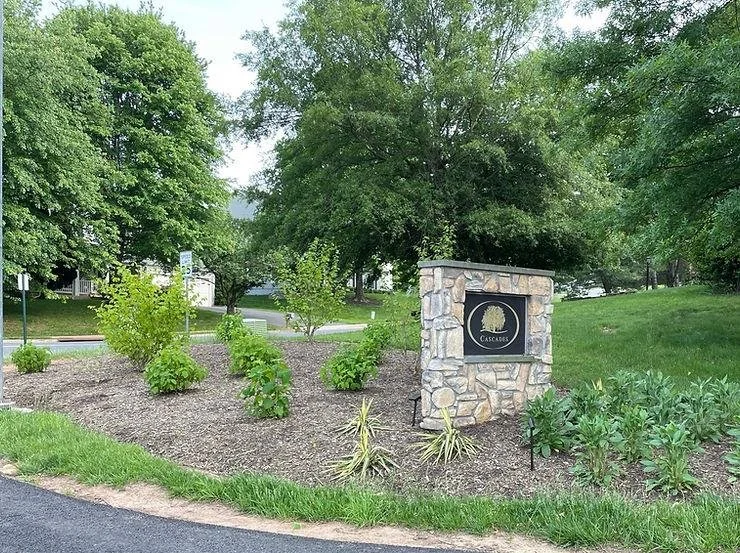Photo: Native plants on display at a neighborhood entrance, Jane Kirchner
Margaret Fisher (Plant NOVA Natives), Barb Tuset and Betsy Martin (Audubon at Home)
The big signs that welcome visitors to neighborhoods are usually framed by conventional ornamental shrubs, grasses, and annual flowers. Last year, Northern Virginia communities were invited to apply for matching mini-grants to spruce up their entranceways using only Virginia native plants. A condition of the mini-grants was that the projects be designed by a professional landscape designer to require no more long-term maintenance than the typical landscaping crew is accustomed to providing. The original grant money was provided by Dominion Energy Charitable Foundation’s Environmental Education and Stewardship Grants Program to the Audubon at Home program in collaboration with Plant NOVA Natives. Audubon at Home volunteers help residents and organizations strategize about using their properties to create wildlife sanctuaries.
Interest in the grants was high. Thirty-five neighborhoods in Arlington, Fairfax, Prince William, and Loudoun counties applied for the six grants, which also required that the communities do outreach to educate their residents about the value of using native plants to beautify their yards and support birds and other wildlife. Conventional landscaping may appeal to the aesthetic tastes of many people, but keeping the look fresh is a challenge and can be expensive. Shrubs that are repeatedly trimmed start to decline, ornamental grasses get overgrown and floppy, and annual flowers have to be replaced three times a year. More importantly, the usual non-native choices for shrubs and grasses in this situation are often invasive, which contributes to adjacent yards and natural areas being overrun by escaped Chinese Privet, Japanese Barberry, Chinese Silvergrass, English Ivy, Periwinkle, Liriope, and other offenders. By contrast, carefully chosen native shrubs can be allowed to reach their natural height without trimming, and tidy-looking native perennials need only be planted once. The result can still satisfy residents’ desire for a formal look (and for flowers) while requiring different but no more burdensome maintenance tasks.
Native plants on display at a neighborhood entrance, Jane Kirchner
As seen on this web page, even soon after installation, the entranceways of the grant recipients were showing the potential of this new approach. As they fill in over the next two years, passersby will be able to appreciate what native plants can do when installed using solid design principles. Landscaping in an institutional setting has its challenges, whether it be a community association, faith community, or other organization where volunteers run the Board and committees. Tempting though it is to install colorful pollinator gardens with a dizzying array of native flowers to attract butterflies, most communities would be hard pressed to find experienced gardeners to dedicate the hour or so per month needed for an average size garden bed, year after year. This degree of expertise becomes unnecessary if only a few distinctive-looking plant species are installed, making weeding a simpler task for any worker. More tips can be found on the Plant NOVA Natives website. As the volunteers at Auburn Village Condominium wrote, “Communities should not be afraid to have native gardens. They can be designed in a way to look like conventional gardens and at the same time be beneficial to critters. We wanted our space to show the community that beautiful spaces can be created with native plants.”


